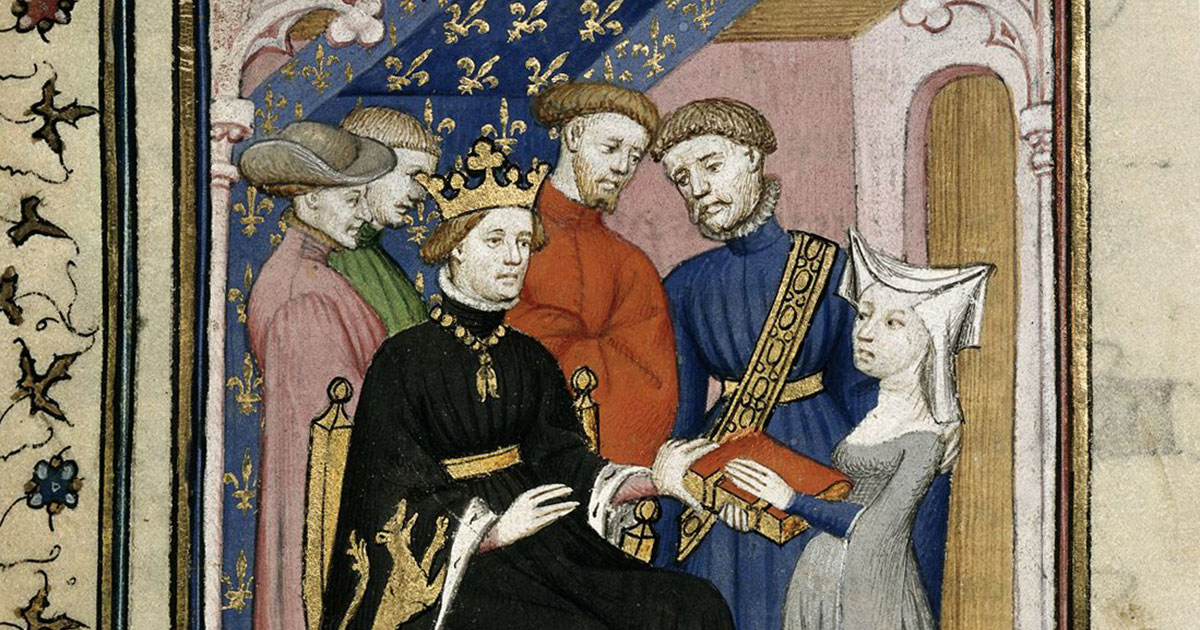Author makes new discoveries about proto-feminist work

LAWRENCE – Proto-feminist French author Christine de Pizan’s book of advice for princes, the “Epistle d’Othea,” was the medieval European equivalent of a best-seller. Together with her other works, it made her the first Western woman to support herself solely by writing.

First written circa 1400, the book continues to fascinate 21st century scholars, and they continue to make discoveries about it. That includes Misty Schieberle, University of Kansas associate professor of English, whose new book, “Christine de Pizan’s Advice for Princes in Middle English Translation: Stephen Scrope’s The Epistle of Othea and the Anonymous Litel Bibell of Knighthood,” is the first to compare two popular translations of the book into English.
Schieberle argues that while English author Scrope’s version is a more direct translation of the original text, the anonymous “little Bible” adapts the text to an English literary context, changing form and content to appeal to English trends. The base text for the “little Bible” also represents a far more popular version and thus deserves study. While composed as a “mirror for princes,” dispensing the wisdom of the ages from the mouth of Christine's wholly constructed narrator/goddess of wisdom, Othea, the book was popularized as a guide to chivalry as that word’s literal meaning – knighthood or nobility — was changing to include the notion of proper conduct for all.
Last year, Schieberle published an article showing that the English poet Thomas Hoccleve, popularizer of Chaucer, had hand-copied the “Epistle of Othea” into a volume held by the British Library.
Her new book goes into greater detail on that and other discoveries.
“There's also the new discovery that the Litel Bibell is a mid-15th century translation,” Schieberle said. “Scholars had previously thought it could have been copied from a 16th century printed edition. But my evidence shows that was impossible, and it's clearly a medieval production.”
Even though Schieberle demonstrates that the “Litel Bibell” is older than previously thought, it was produced from a slightly altered version of the work, not one of the manuscripts Christine herself copied, Schieberle says – something not uncommon in the days before printing presses.
“I also use that in some ways to argue for the importance of looking at manuscripts that were not as closely connected to the author,” she said. “There is a tendency in medieval studies to value the manuscripts that were written in the author's own hand, or that were written as close as possible to her lifetime. However, in the case of the 'Othea,' the manuscripts from a version that we don't have in Christine's own hand were the most popular and widespread. So it's essential to look to those manuscripts and not just the ones written by Christine herself. Those are the ones that were translated into the Litel Bibell of Knighthood and the ones that became the early French printed editions, which became the early English printed editions.
“I'm in the unusual position of arguing that the manuscripts least connected to the author are, in fact, most important to studying how the work was interpreted and received by her contemporaries, because she only copied manuscripts for aristocratic patrons, and most of those stayed locked up in royal libraries.”
Scieberle said the longer she studies Christine de Pizan, the more she admires her.
“The more of her work I read, the more impressed I become by her resolve and intellect,” Schieberle said. “She cites so many major works. She also was, in some ways, an activist. She got involved in a debate among university scholars about the anti-feminism in an extremely popular French work of the time that had the most misogynist representations of women. So she really held her own against male university scholars, and her works range from citing common proverbs to citing the Bible and drawing on Aristotelian ideas and major intellectual writers of the Middle Ages. And we are only now starting to understand the depth of her influence on English writers and literary history.”